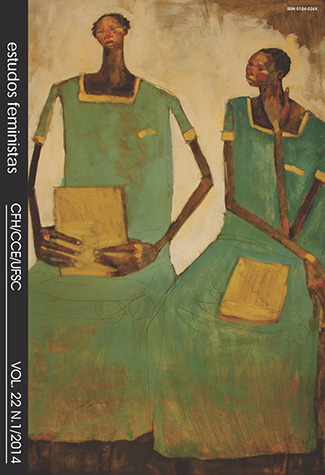(Obs)Cene: the Place for Female Desire in Gustav Klimt and Clarice Lispector
DOI:
https://doi.org/10.1590/S0104-026X2014000100009Abstract
This article underlines the place of (obs)cene into which female desire is persistently displaced. It sets up a dialogue between pictorial and literary language, taking account of the compositional economy in Gustav Klimt’s “The three ages of the woman” and of Clarice Lispector’s short story “Ruído de passos” (Sound of steps). It contemplates the horizons of senses, aggregated by the circulation and reception of both objects, especially when it comes to the autonomy of the detail in Klimt’s painting. The discussion further suggests effects of gender-specific displacements in contemporary cultural criticism, in view of open-ended agendas on inclusion. It is sustained that gender perspectives shed decisive light upon the interpretive act and prove crucial to the development of notorious philosophical contributions by discourse theoreticians like Bakhtin.Downloads
Downloads
Published
How to Cite
Issue
Section
License
Revista Estudos Feministas is under the Creative Commons International 4.0 Attribution License (CC BY 4.0), that allows sharing the work with recognition of authorship and initial publication in this journal.
The license allows:
Sharing (copying and redistributing the material in any support or format) and/or adapting (remixing, transforming, and creating from the material) for any purpose, even if commercial.
The licensor cannot revoke these rights provided the terms of the license are respected. The terms are the following:
Attribution – you should give the appropriate credit, provide a link to the license and indicate if changes were made. This can be done in several ways without suggesting that the licensor has approved of the use.
Without additional restrictions – You cannot apply legal terms or technological measures that prevent others from doing something allowed by the license.




